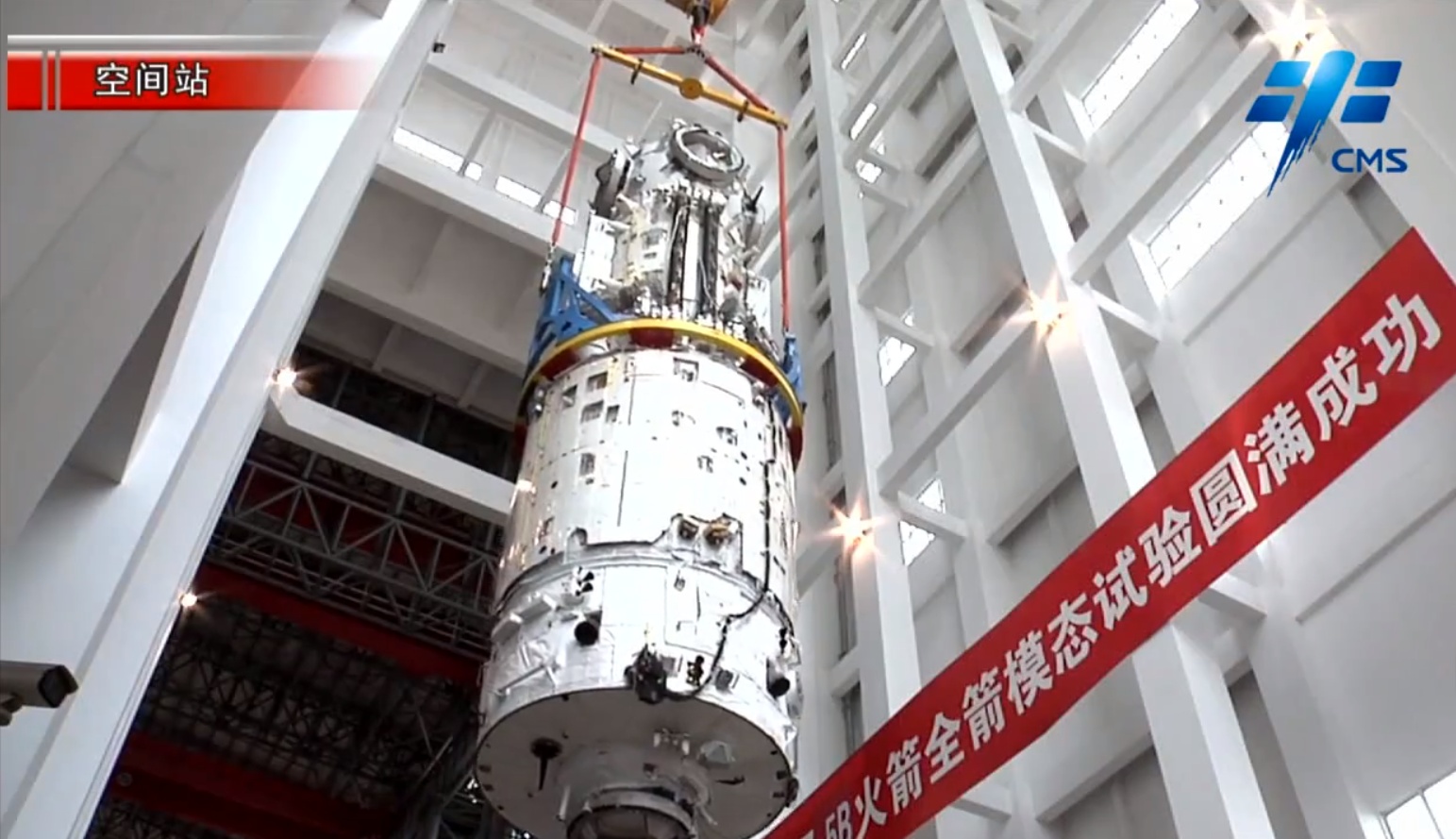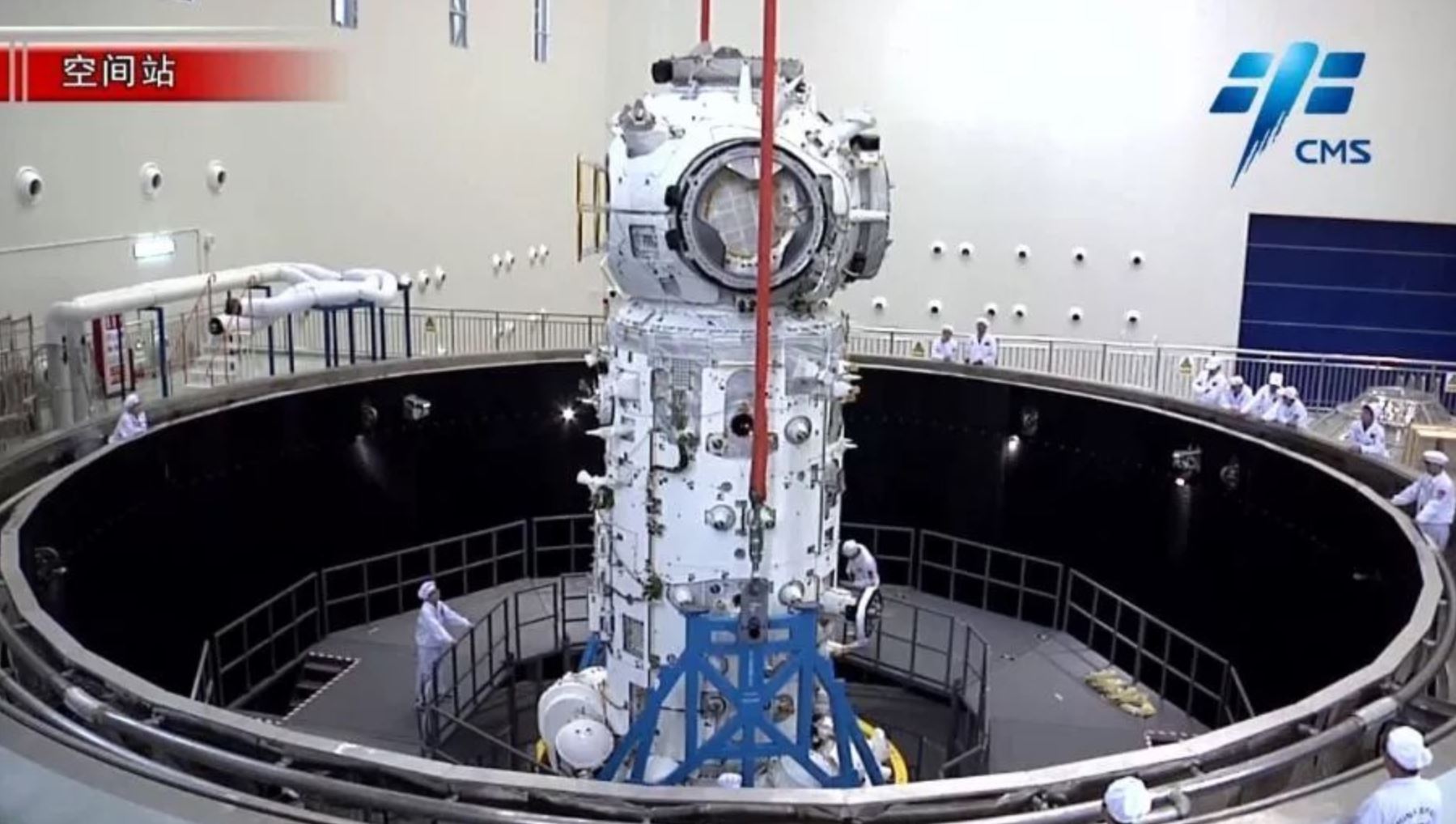China's first space station module is ready for flight

The core module for China's planned orbital space station has passed a flight acceptance review and will now launch in the coming months, marking the beginning of a flurry of major missions by the country.
The announcement from China Manned Space, the country's human spaceflight agency onJan. 14 comes as China gears up for the construction phase of its own, three-module space station.
The core module, named Tianhe and meaning "harmony of the heavens," will be the main living quarters for crews of three astronauts on visits of up to six months at a time.
Related: China selects 18 new astronauts in preparation for space station launch
Space.com Collection: $26.99 at Magazines Direct
Get ready to explore the wonders of our incredible universe! The "Space.com Collection" is packed with amazing astronomy, incredible discoveries and the latest missions from space agencies around the world. From distant galaxies to the planets, moons and asteroids of our own solar system, you’ll discover a wealth of facts about the cosmos, and learn about the new technologies, telescopes and rockets in development that will reveal even more of its secrets.
Tianhe will provide power and propulsion for the whole space station. It also features a docking hub that will allow two later experiment modules to join with Tianhe, as well as provide ports for visiting crewed Shenzhou spacecraft and Tianzhou cargo vessels. The hub also provides an airlock for astronaut extravehicular activities, or spacewalks.
Tianhe, which is around 59 feet (18 meters) long and weighs about 24 tons (22 metric tons), will launch atop a Long March 5B rocket from Wenchang Satellite Launch Center, on the island of Hainan.
Final work and testing of the Long March 5B rocket to launch the mission is underway in Tianjin, north China. The rocket components will soon be transported by cargo ship to Wenchang.
Breaking space news, the latest updates on rocket launches, skywatching events and more!
Tianzhou-2, a cargo and refueling spacecraft which will launch soon after to visit Tianhe, also passed its flight readiness review. It will launch on a Long March 7 rocket, also from the Wenchang launch center.
China carried out tests and verification of autonomous refueling in microgravity in 2017 by sending the Tianzhou-1 spacecraft to dock with and refuel Tiangong-2 in low Earth orbit. The mission was a vital step for China's space station project, as the future outpost will need to replenish fuel supplies spent to occasionally raise its orbit to counter the effects of atmospheric drag.
Related: The latest news about China's space program
China has not announced a timeline for the missions, instead stating they will take place this spring. Previous Long March 5 launches were carried out around two months after the rocket components arrived at Wenchang.
Shenzhou-12, the first crewed mission to Tianhe, will launch after Tianzhou-2. It will launch from Jiuquan in the Gobi Desert atop of a Long March 2F rocket.
China is planning 11 missions across 2021 and 2022 to complete the space station complex, including three module launches, four Tianzhou cargo ship missions and four Shenzhou crewed missions.
The completed outpost is expected to be about one-fifth the mass of the International Space Station, a project from which China was barred by the United States.
While China is constructing the space station alone, a first selection of international experiments will fly to the orbital complex after its completion.
Follow us on Twitter @Spacedotcom and on Facebook.

Andrew is a freelance space journalist with a focus on reporting on China's rapidly growing space sector. He began writing for Space.com in 2019 and writes for SpaceNews, IEEE Spectrum, National Geographic, Sky & Telescope, New Scientist and others. Andrew first caught the space bug when, as a youngster, he saw Voyager images of other worlds in our solar system for the first time. Away from space, Andrew enjoys trail running in the forests of Finland. You can follow him on Twitter @AJ_FI.




